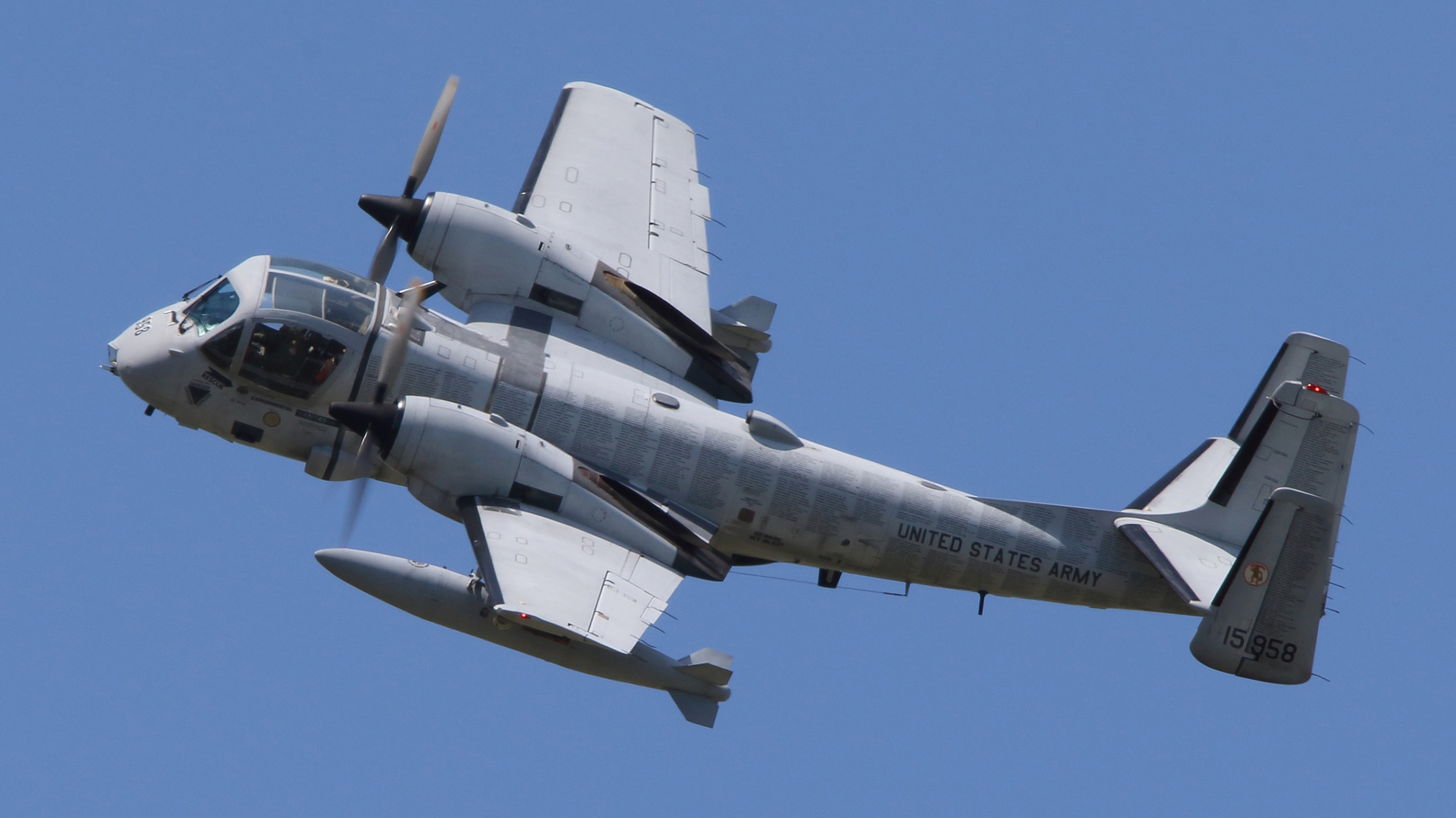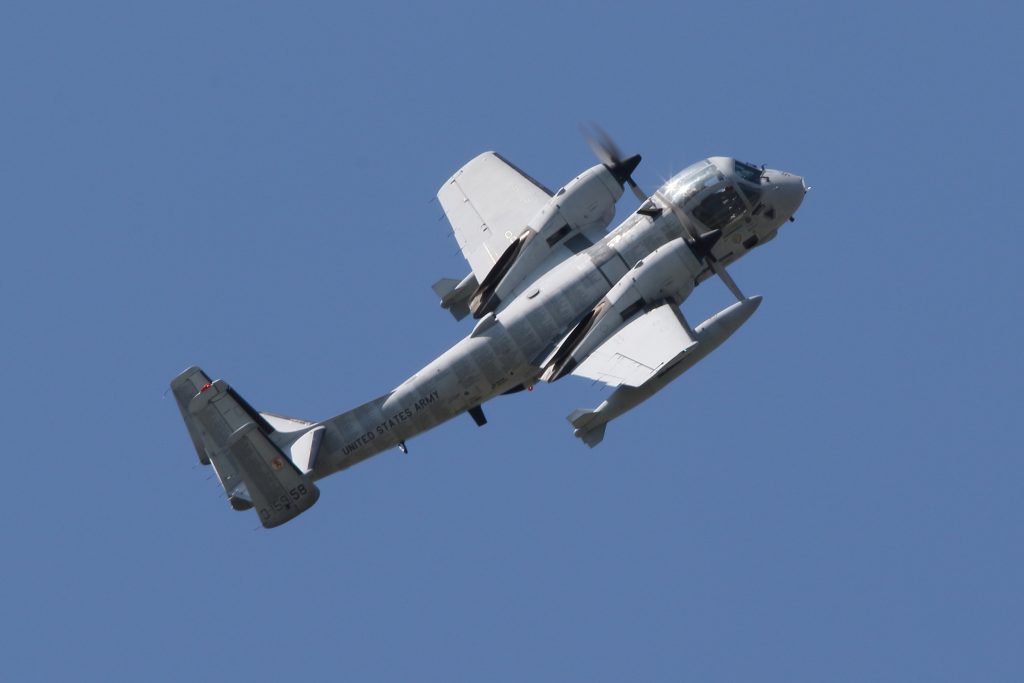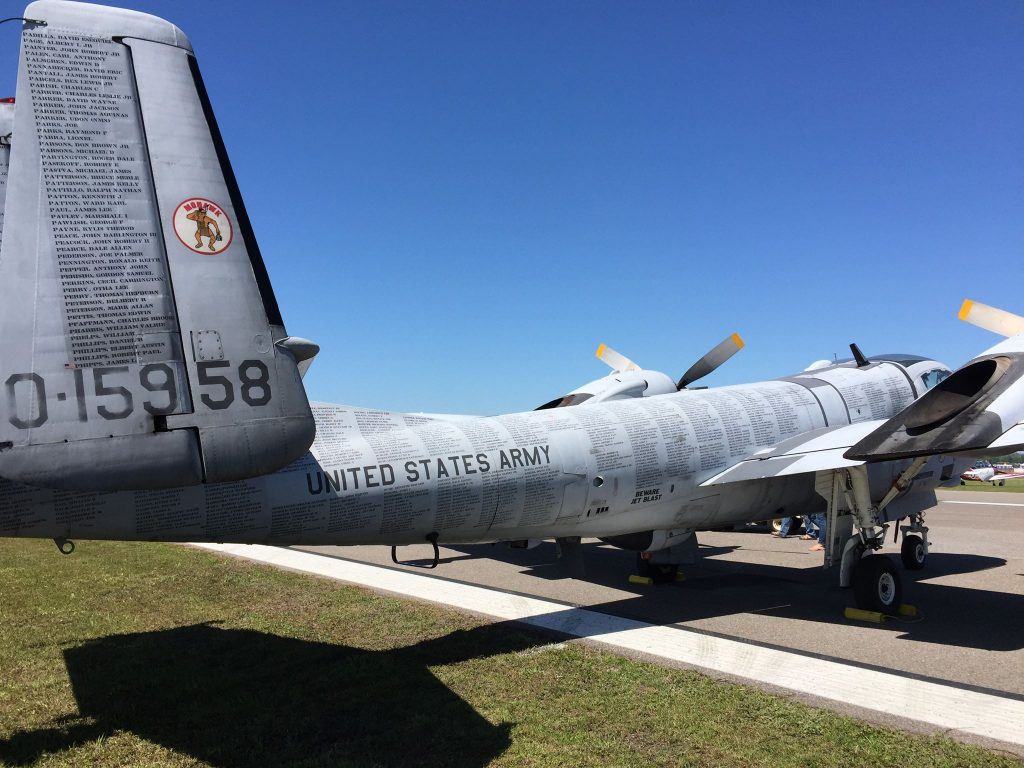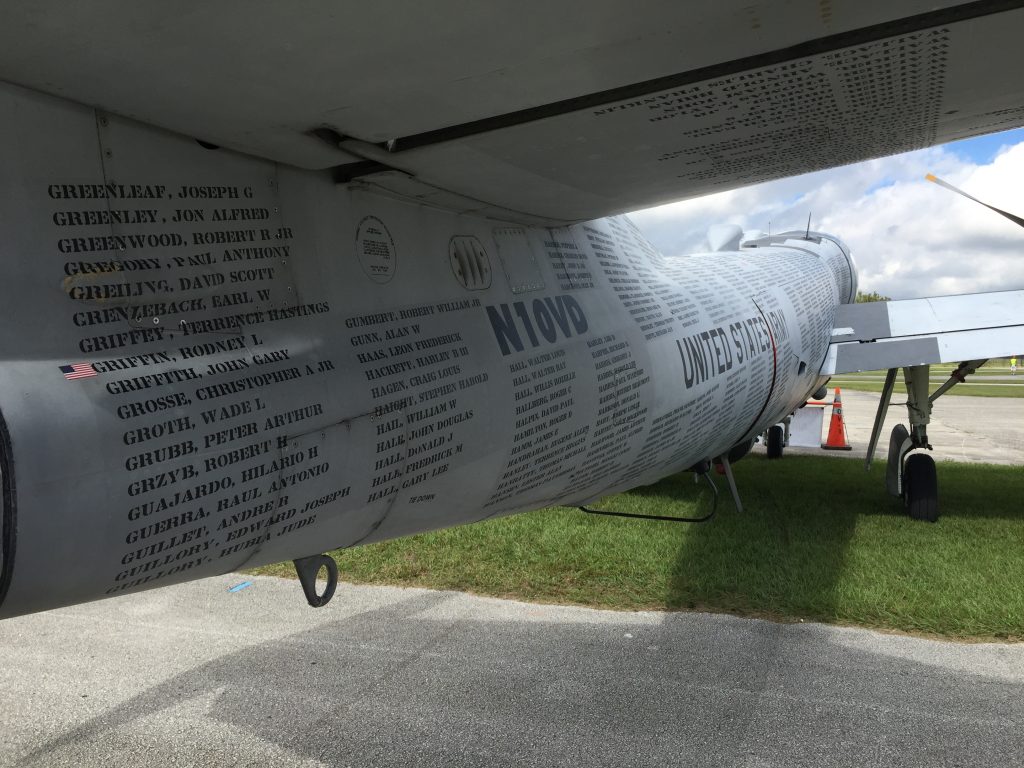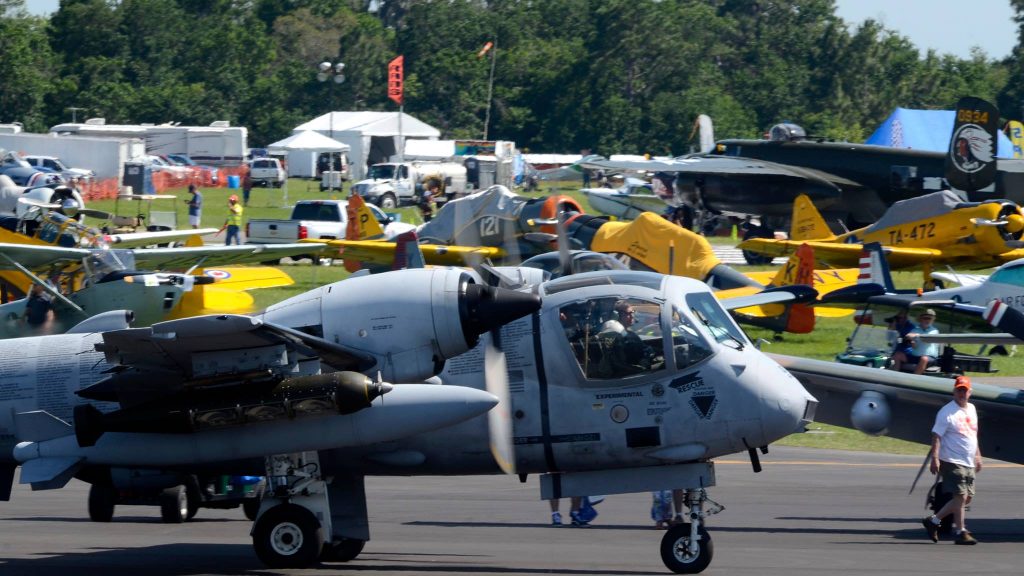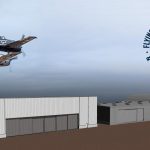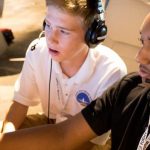The Grumman OV-1 Mohawk is too brutish to ever be called beautiful, but it has enormous charisma, and as such, it is surprising that so few are active on the air show circuit. Despite its vital role in battlefield surveillance, the Mohawk served in relative obscurity, and this may well account for its anonymity in the public eye. Dr. Joseph Masessa is working to change that though. He has owned and operated OV-1C 68-15958 from his base in New Jersey for almost a decade now. When describing his Grumman Mohawk’s history in conversation with WarbirdsNews, Masessa noted that the aircraft “…was delivered to the US Army as an OV-1C model in 1969. Sometime in 1982, in preparation to be sent to Israel, it was converted to an OV-1D in Stuart, FL. The conversion put new electrical systems, wiring, new longer wings, and new, upgraded, more powerful Lycoming T53-L-701 engines. The Mohawks didn’t wind up going to Israel however, and the aircraft served as an OV-1D Mohawk sensor and mission trainer at Edwards AFB and Fort Huachuca. Mohawks served from Vietnam to Desert Storm and left the Army in 1992 and finally the ANG in 1996. Our particular aircraft left the Army for private ownership in 1991.”
While never having served in the military himself, many of Joe Masessa’s close family members did, and recognizing their service has been important to him for much of his life, and this is in part why he acquired the OV-1. A few years ago, Masessa was looking for a way to both engage the public more closely with the Mohawk, and also to help tell the stories of those who have served and sacrificed for the nation. As a result, he decided to turn his OV-1 into a literal flying monument by placing on its skin the names of all 1,636 U.S. servicemen still listed at the time as being Missing In Action from the Vietnam War.
Julie-Cristie Neal, one of Mohawk Air Shows team members, came up with the idea for this powerful tribute and described the process for WarbirdsNews as follows… “I told Joe he needed to do something really big, meaningful and unique. I started researching Vietnam, and that’s when it hit me. There needed to be a special dedication for the men who never came back from Vietnam. The POW/MIA men who paid the ultimate price for our freedom. And I was heartbroken to know how many still hadn’t been returned home. Their remains just lost and families with no closure. Those brave and dedicated men and their families needed something special just for them. This hit close to home as my father served in the Army Air Corps during WWII. He came home, but he easily could’ve been one of the many that didn’t… Joe was on board with the idea, but we were all skeptical about how we were going to fit all of those names on that airplane, and who was going to do it. The names were printed out, and every letter with negative space, like o’s and d’s, etc… had to be weeded out by hand!!! What a huge job! I spent about 6 hours on that job and Larry and Brandon finished the rest of them. Those guys put a lot of hours into that. Then, the flying monument was born. I’m so thankful to be a part of it. It’s a symbol of patriotism, thankfulness and remembrance of all of the men and women who fight for our freedom in the armed forces.”
So now at an air show, when Masessa isn’t performing his aerobatic routine in the Mohawk, his aircraft becomes a focal point for visitors on the ground. Witnessing such a sea of names reminds those who view them of the enduring anguish, even five decades later, that so many family members and friends of the missing still bear. Many people who might otherwise pass by the Mohawk at an air show now stop to ask about the names… and from there a discussion begins.
From time-to-time, the military is able to repatriate and identify the remains of a lost serviceman from the Vietnam War. When Masessa learns their identity, he places a small American flag beside the letters of their name to let the public know they are no longer missing. You can see one of those American flags beside the name of one just man, Rodney L. Griffin in the image below. His name stands out amidst the ink of so many others who still have no known grave, and reminds us again of the human toll wrought by a war, even half a century later.
On May 2nd, 1970, Sergeant Rodney L. Griffin was riding with several fellow soldiers from the 2nd Battalion of the 34th Armored Regiment of the 25th Infantry Division in a UH-1H Iroquois helicopter en route to Fire Support Base Katum in South Vietnam, close to the Cambodian border. Bad weather forced the helicopter to divert, and they ended up in Cambodian airspace where they took heavy incoming fire, which forced the helicopter down in Kampong Cham Province, Cambodia. All eight men aboard survived the emergency landing; four of them aircrew, and four infantry. The men tried to escape, and a firefight ensued in which three of them died at the scene: Maj. Dale W. Richardson, Staff Sgt. Bunyan D. Price Jr., and Sgt. Rodney L. Griffin. Four of the survivors became prisoners of war, although a fifth managed to escape and make it back to friendly lines a couple of days later. Sadly two of the POW’s did not survive captivity, although their bodies were repatriated soon after the war.
When Masassa learned of the discovery and identification of Griffin’s remains, he placed an American flag decal besides his name on the Mohawk. He did the same for Richardson and Price, who were found at the same time. Griffin was positively identified from DNA samples provided by his brothers, Bill and Darryl. One can only imagine how they and Griffin’s widow, Donna, must have felt upon finally finding some measure of closure. The same must also be true for the families of Richardson and Price. This is the reason why the U.S. military’s efforts through the Defense POW/MIA Accounting Agency (DPAA) is so valuable. Under their auspices, a hundred or so missing US servicemen and women are identified each year, although the majority of these date from WWII and the Korea War where so many more personnel were lost without trace. But for the DPAA to continue their efforts, they need the public to support the budget for their mission, which is expensive work. As an example of the dedication and resources required for the recovery of just Richardson, Price and Griffin alone, U.S. military forensic teams visited the site of the soldier’s last stand in Cambodia numerous times over a period of two decades before making their discovery in February 2012. It took a further three years to positively identify the three men. Masessa’s Mohawk, with it’s many hundred names tattooed to its sides, plays a role in keeping that mission in the public eye, and promoting its relevance. Joe Masessa and his team are worthy of justifiable praise for their efforts in keeping alive the names and stories of the missing. And also for keeping alive the forgotten legacy of the Mohawk. Long may they fly…
If any of our readers wish to see the Mohawk, or talk with Joe Masessa, the OV-1 is already scheduled for several air shows this season. The following is their present published list, although they will surely add more events as 2018 unfolds. Be sure to stop by the Mohawk and say hello…
Apr. 7-8: Thunder In the Valley – Columbus, GA
Apr. 10-13: Sun ‘n Fun International Fly-In & Expo – Lakeland, FL
Apr. 14-15: Tuscaloosa Regional Airshow – Tuscaloosa, AL
Apr. 21-22: Wings Over Columbus – Columbus AFB – Columbus, MS
Apr. 28-29: Wings Over Myrtle Beach Air Show – Myrtle Beach, SC
May 5-6: Power in the Pines – Joint Base McGuire-Dix-Lakehurst – nr. Wrightstown, NJ
May 19: Anderson Airshow – Anderson, SC
WarbirdsNews wishes to thank Joe Masessa, Kevin McNulty, Andy Hill and Julie-Cristie Neale for their contributions to this article. To book the Mohawk for your air show, or to contact Joe Masessa please be sure to check out their website HERE, or their Facebook page HERE.







